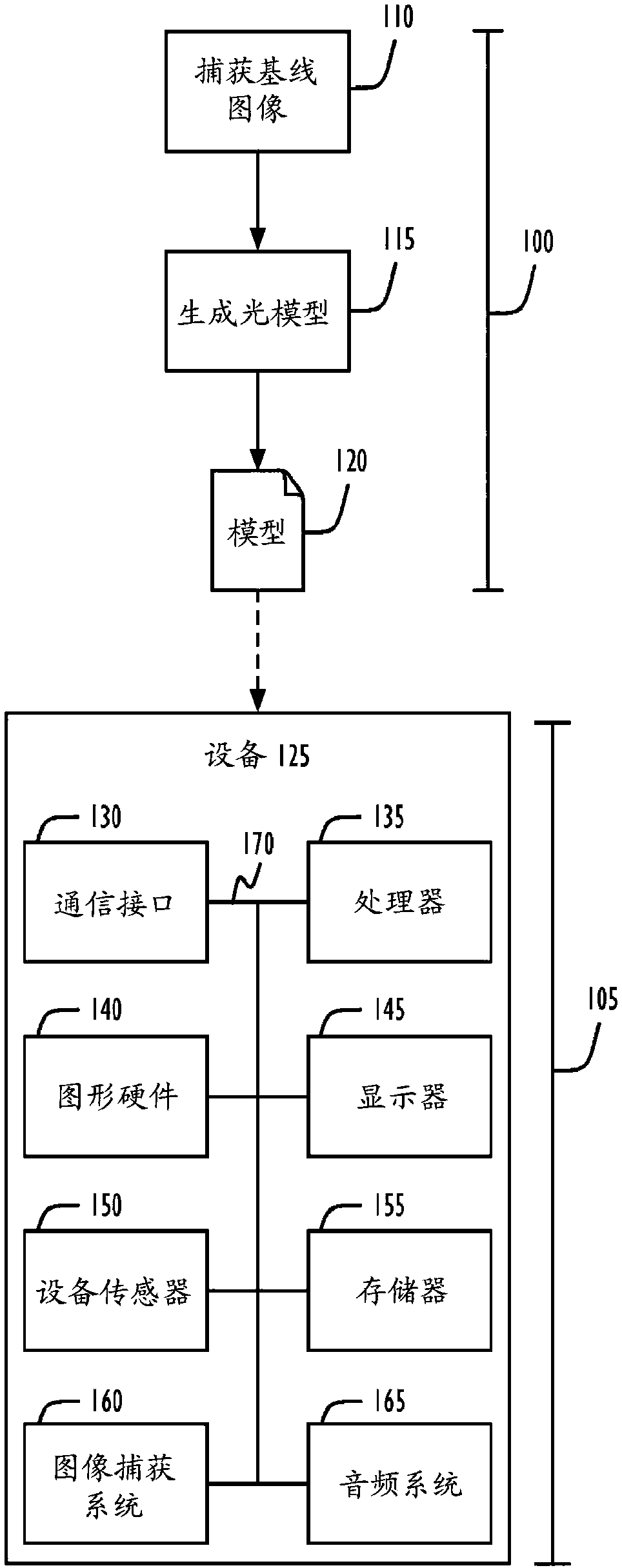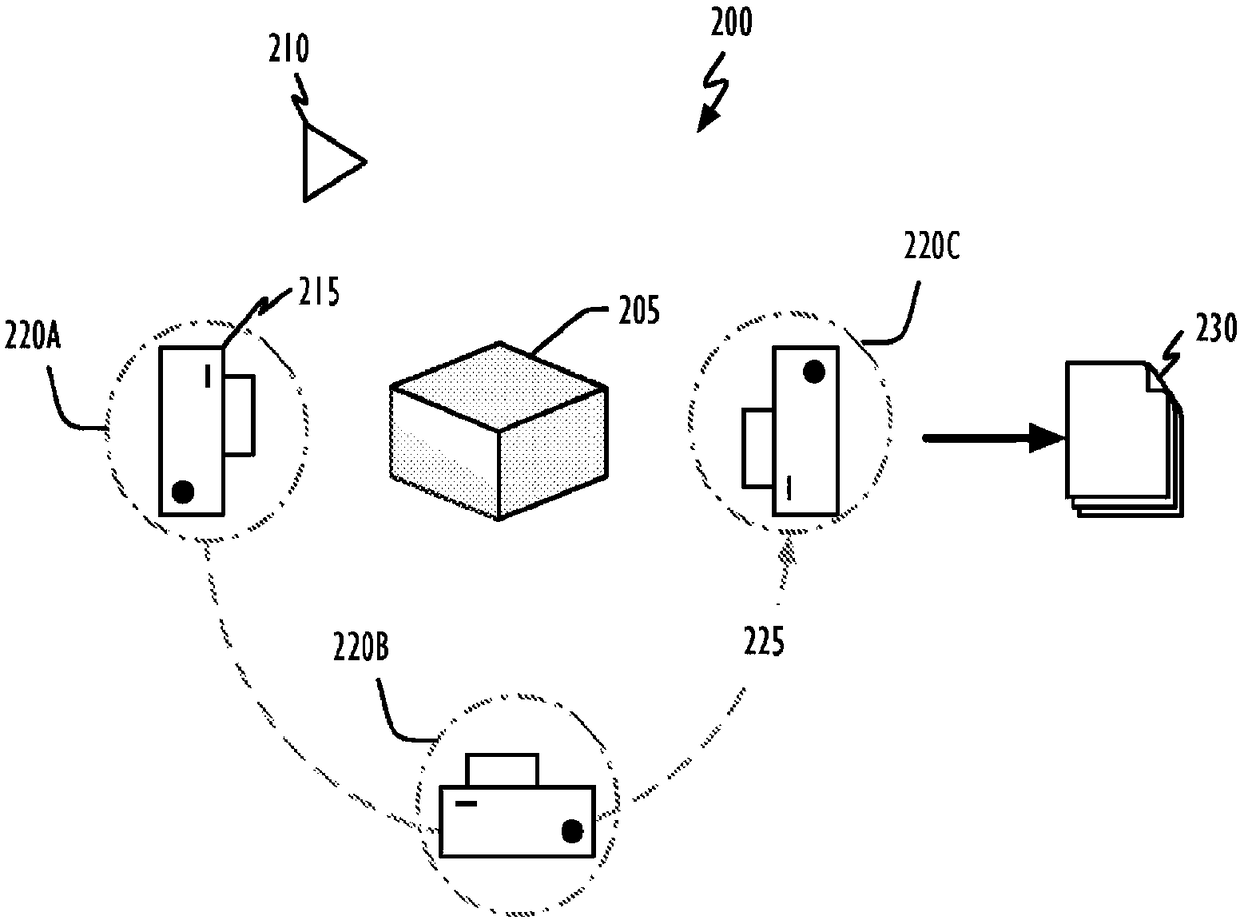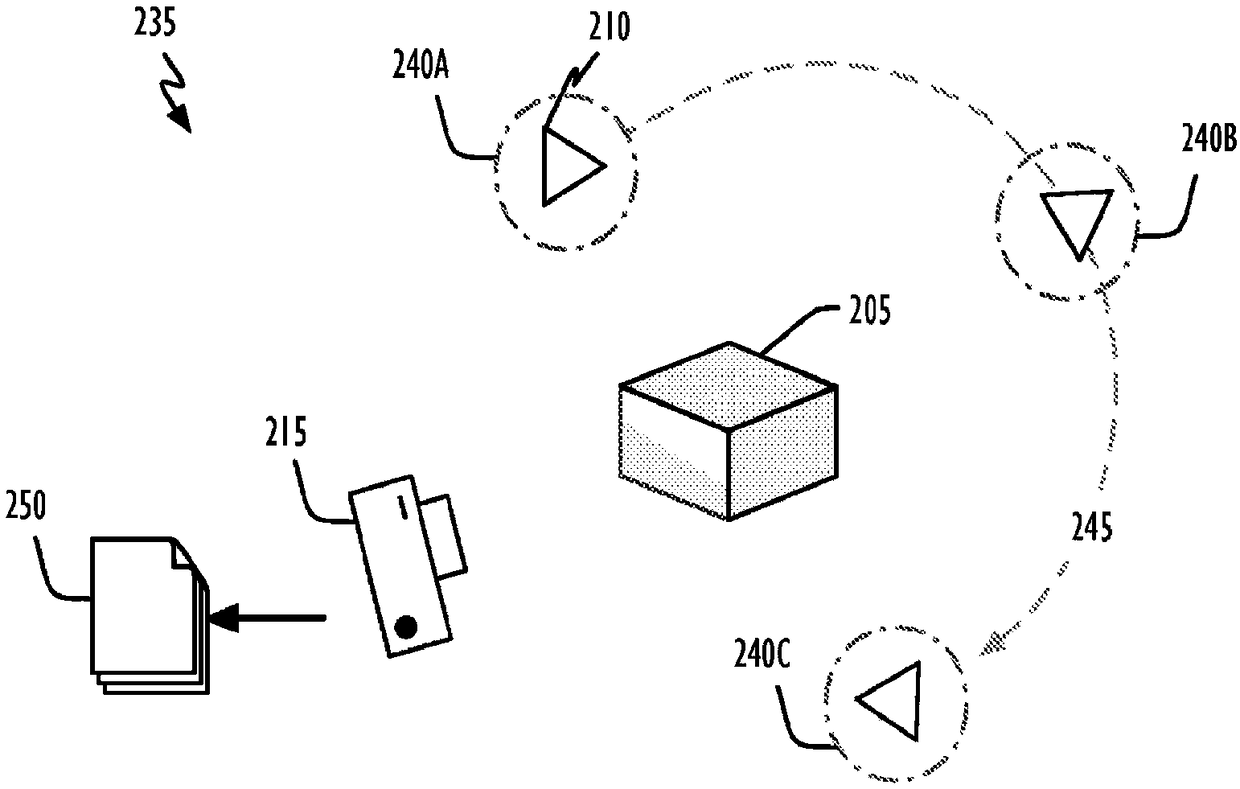Method, device and program to display 3D representations of an object based on orientation information of the display
An orientation and object technology, applied in the field of 3D representation, equipment and programs based on the orientation information of the display, can solve the problems of difficult low-memory device implementation and large number of images
- Summary
- Abstract
- Description
- Claims
- Application Information
AI Technical Summary
Problems solved by technology
Method used
Image
Examples
Embodiment Construction
[0010] The present disclosure relates to systems, methods, and computer-readable media for displaying graphical elements that exhibit three-dimensional (3D) behavior. In general, techniques are disclosed for displaying graphical elements in a manner that simulates full 3D visibility, including parallax and shadows. More specifically, a plurality of images captured, each having a known spatial relationship to the target 3D object, may be used to construct a lighting model of the target object. For example, in one embodiment, this can be accomplished using polynomial texture mapping (PTM) using spherical or hemispherical harmonics. Relatively few base images can be identified using PTM technology. When the target object is to be displayed, the orientation information may be used to generate a combination of base images in order to simulate a 3D representation of the target object—in some embodiments, using shadows and parallax distortion. Orientation information may be obtaine...
PUM
 Login to View More
Login to View More Abstract
Description
Claims
Application Information
 Login to View More
Login to View More - R&D
- Intellectual Property
- Life Sciences
- Materials
- Tech Scout
- Unparalleled Data Quality
- Higher Quality Content
- 60% Fewer Hallucinations
Browse by: Latest US Patents, China's latest patents, Technical Efficacy Thesaurus, Application Domain, Technology Topic, Popular Technical Reports.
© 2025 PatSnap. All rights reserved.Legal|Privacy policy|Modern Slavery Act Transparency Statement|Sitemap|About US| Contact US: help@patsnap.com



